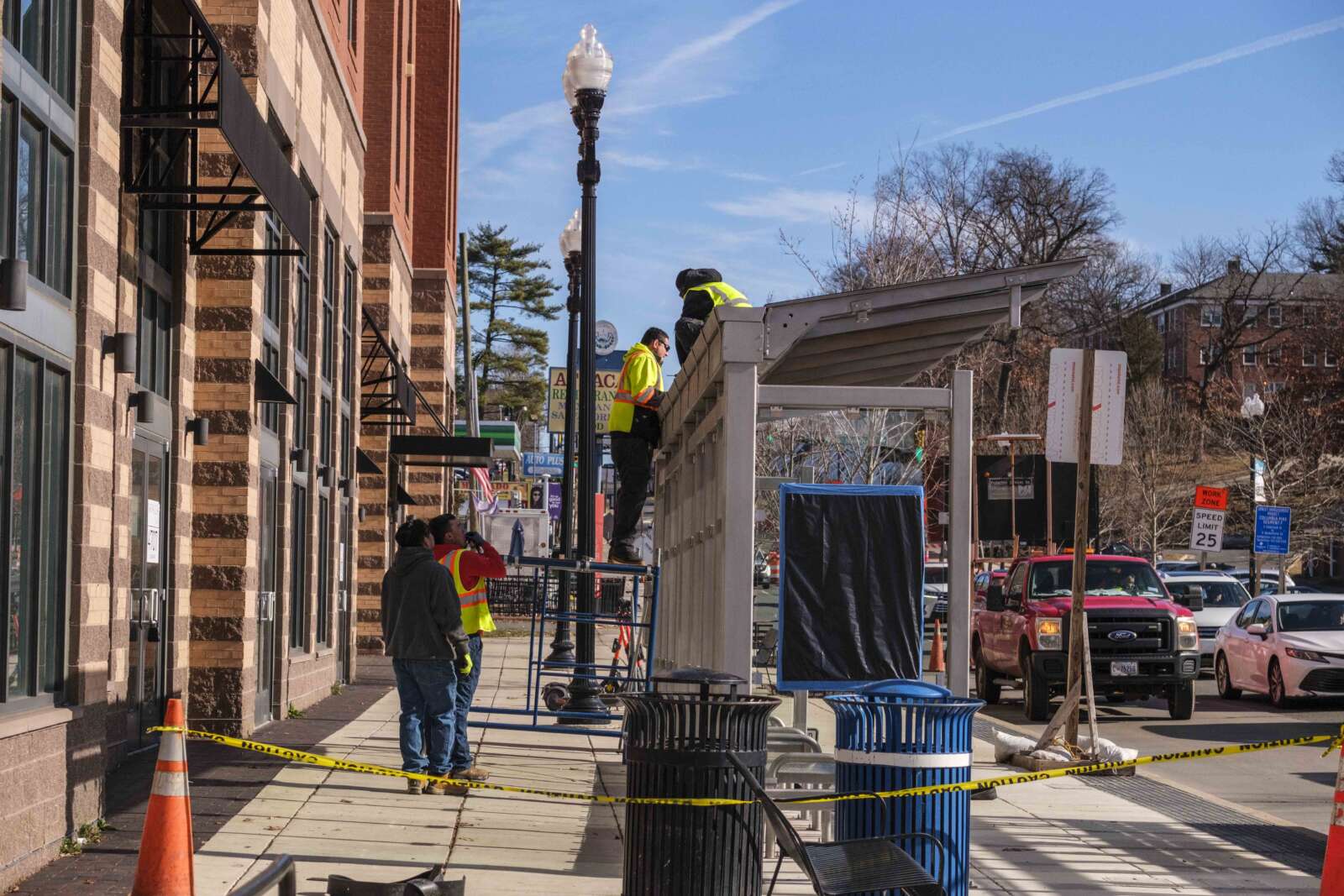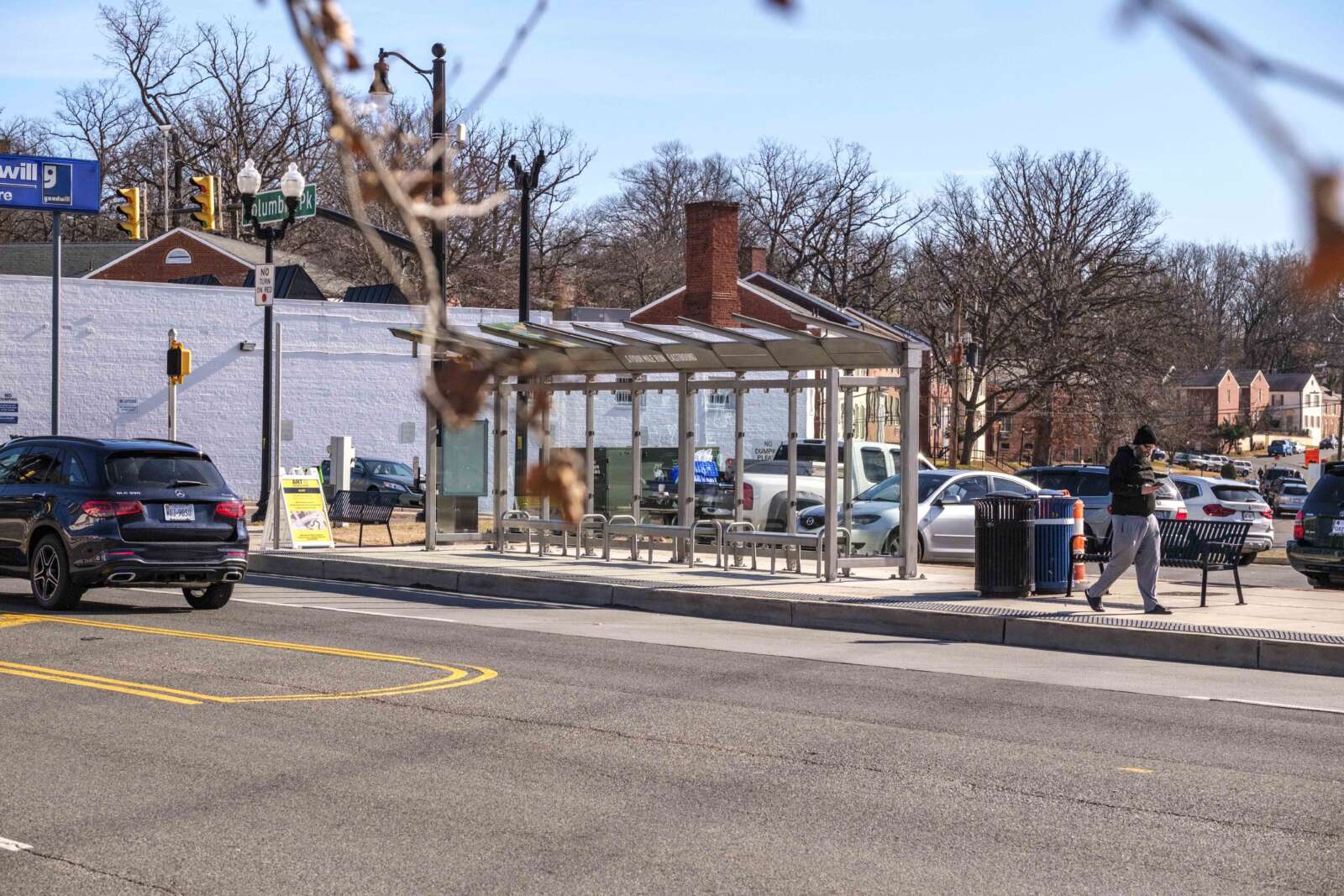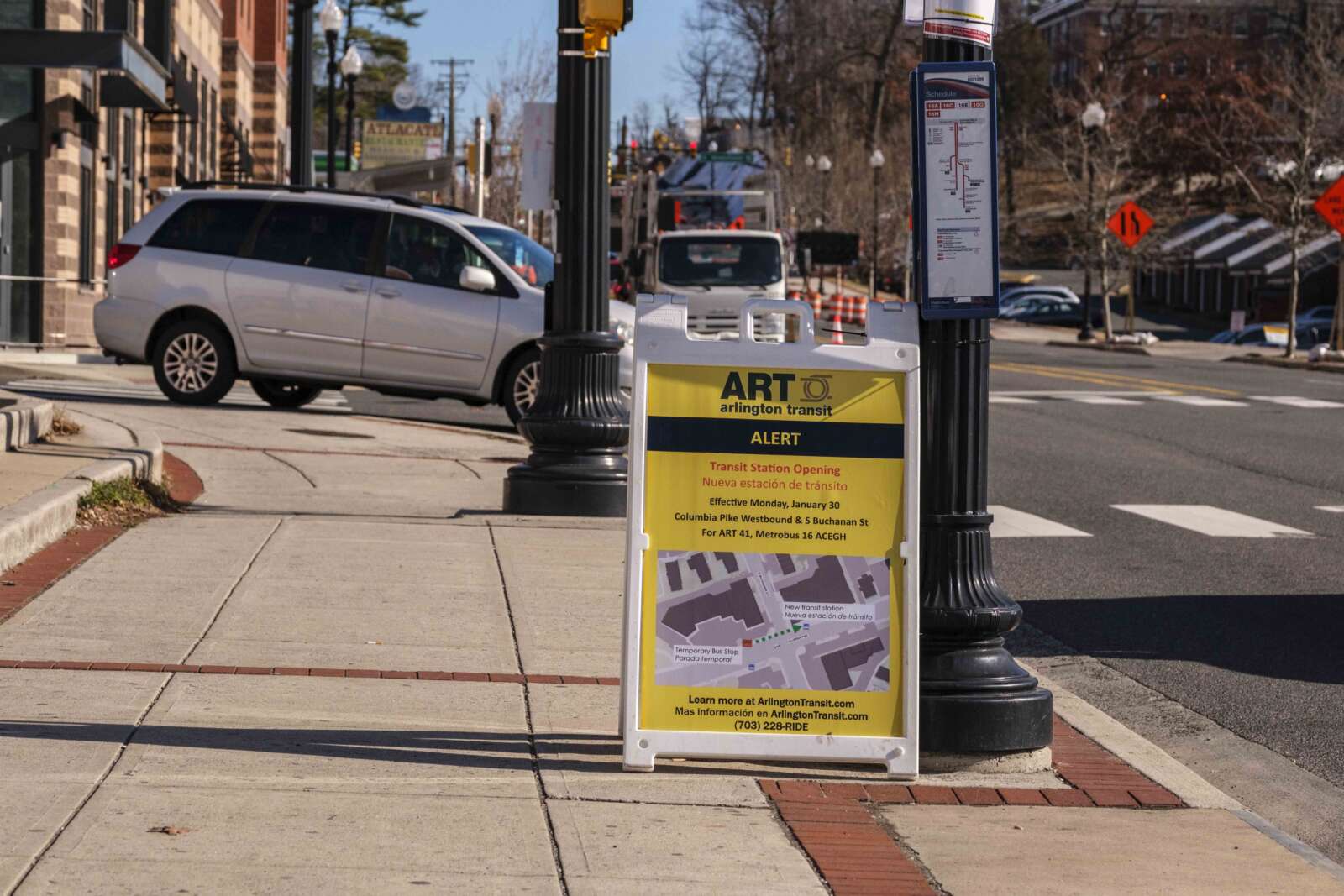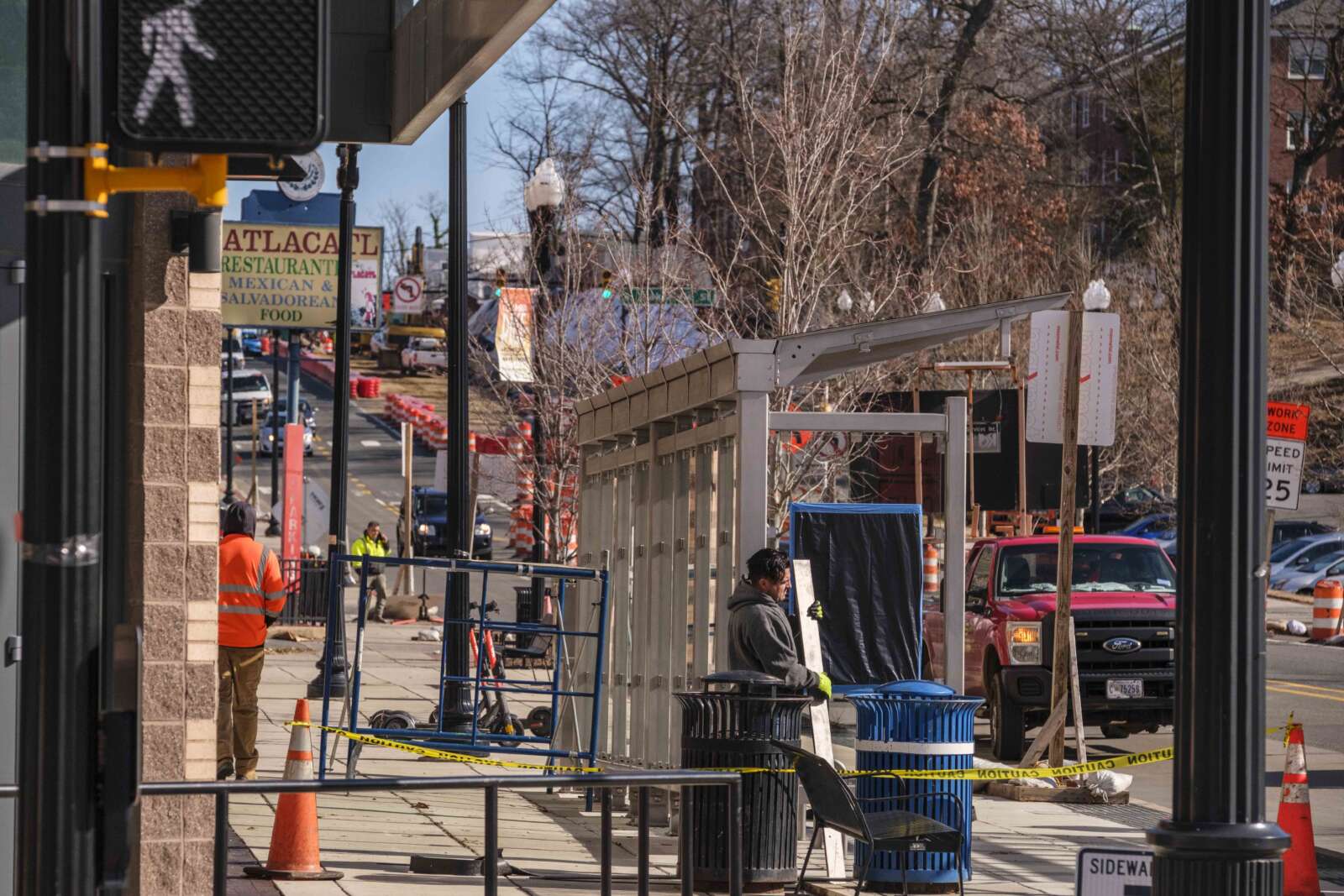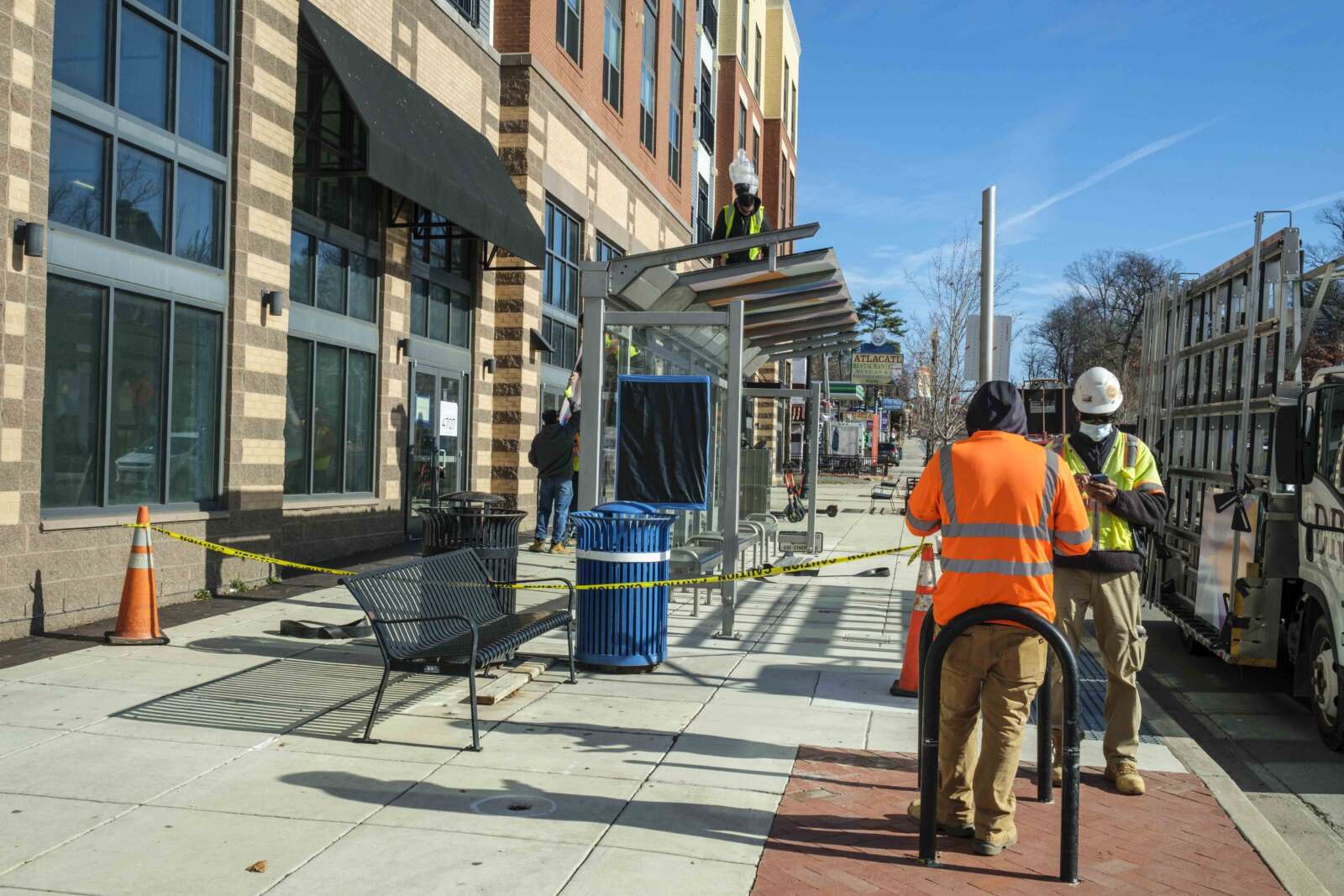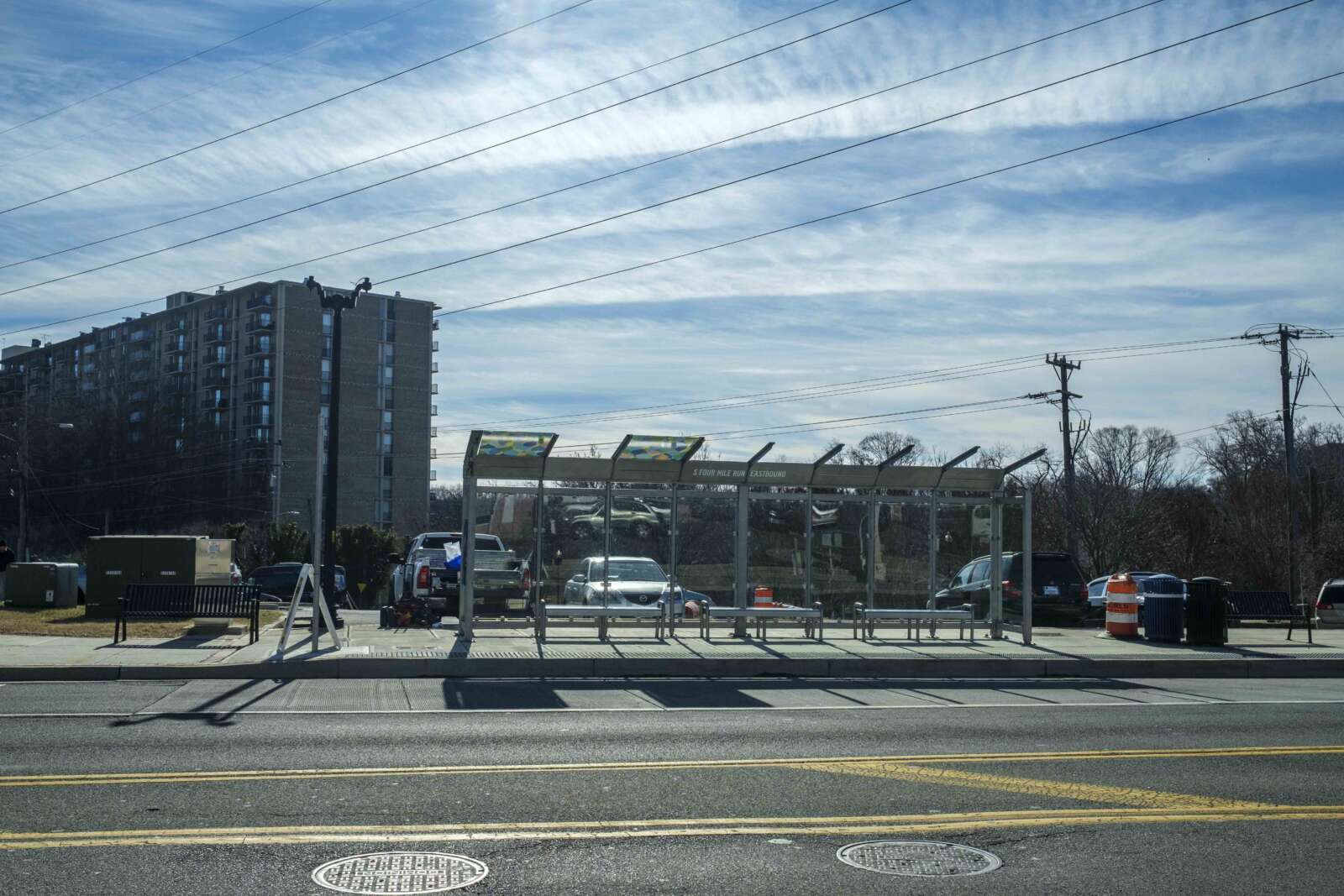Arlington County is applying for regional funding to run buses every six minutes between Fairfax County and Amazon’s second headquarters in Pentagon City during peak hours.
The Arlington County Board on Saturday authorized staff to apply for up to $8 million in Northern Virginia Transportation Commission funding. Funding would offset the operating costs associated with running 10 buses per hour during peak times for two years along a new Metrobus route dubbed the 16M, connecting the Skyline complex in the Bailey’s Crossroads area of Fairfax County down Columbia Pike, to Pentagon City and Crystal City.
The report suggests that the county is preparing for an increase in ridership after the opening of the first phase of Amazon’s HQ2, despite work from home trends.
“The 16M service will provide a direct connection to Amazon HQ2 with its first phase of construction (2.1 million square feet of commercial space) coming on-line in Summer/Fall 2023,” per a county report. “This service will also take advantage of the recently built portions of Columbia Pike and [eight] new transit stations located on Columbia Pike.”
But recommendations to increase frequency along this route date back well beyond Amazon’s decision to move into Arlington, says Dept. of Environmental Services spokeswoman Claudia Pors.
She says the request acts on a 2016 study, which “recommended creating a route connecting Skyline with Crystal City through Columbia Pike in anticipation of growth in Crystal City.” That followed the cancellation of the Columbia Pike streetcar project, which would have followed largely the same route.
“The study evaluated ridership forecasting, current service patterns, like bus and seat availability, and travel patterns, like trip lengths, ridership rates and traffic volume in the area to make the recommendation to increase frequency,” Pors said.
Sometime this spring, the new 16M route will begin revenue service with a base frequency of buses every 12 minutes during the service day. The new route will replace existing 16G/H service.
Pors said the average weekday ridership for the last four-and-a-half years along the 16G/H line peaked at a little over 4,500 average weekday riders before Covid, and is now about 60% recovered compared to pre-pandemic levels.
The 16M will stop at new stations popping up on Columbia Pike and travel existing and forthcoming bus transitway infrastructure. Until the transitway extension to Pentagon City is completed, the bus will use existing streets north of where the Crystal City transitway currently ends, at Crystal Drive and 15th Street S.
Meanwhile, installation work continues on the new transit stations and the first examples opened just after Christmas at S. Greenbrier Street. The new stations have glass roofs and side windscreens, real-time bus arrival displays, lighting and seating.
Stations at S. Dinwiddie Street, S. Four Mile Run and S. Buchanan Street will open next week, Pors said. Stations at S. Glebe Road and S. Oakland Street will open by or in early spring, and a S. Columbus Street station will open after that.
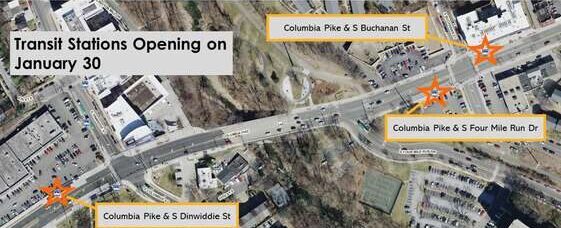
Utility undergrounding and streetscape improvements associated with the new stations are expected to be completed this summer, according to Pors. Stations will be installed when work begins on the next phases of the Columbia Pike Multimodal Project, which the county embarked on years ago to turn the Pike into a “Main Street” for cars, transit, bicycle and scooter riders, and pedestrians.
The next segments to be upgraded are S. Garfield Street to S. Quinn Street and S. Orme Street to S. Joyce Street.
Arlington’s funding application for some of the $45 million available over the next two years is due later this month and will be evaluated this winter and spring. Should the Commonwealth Transportation Board approve the project, it will be slotted into the new six-year improvement plan for 2024-2029 that begins on July 1.
If the application is unsuccessful, the county would either have to fund the enhanced service itself or return to the base frequency of five buses per hour. The application will have letters of support from Fairfax County transportation staff and Washington Metropolitan Area Transit Authority (WMATA) leadership.


